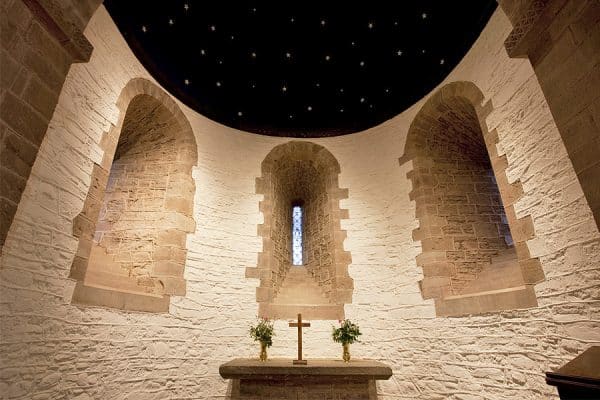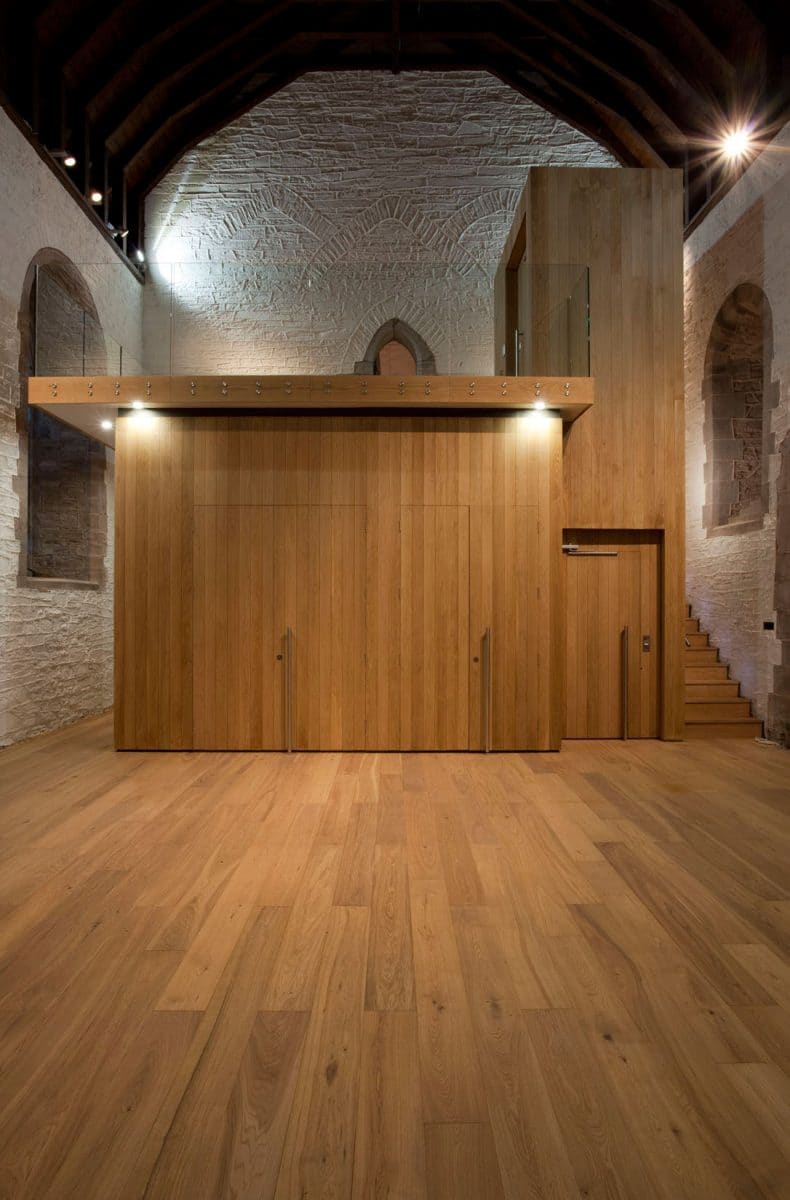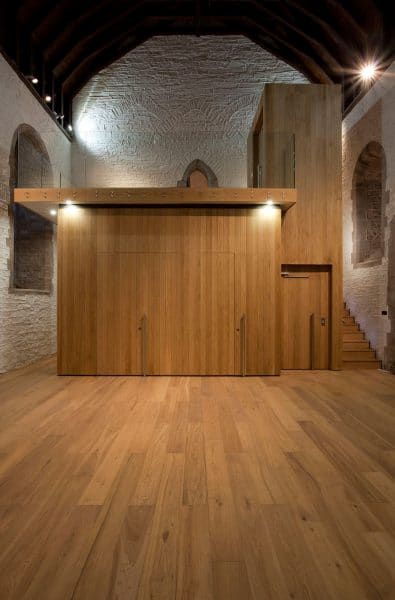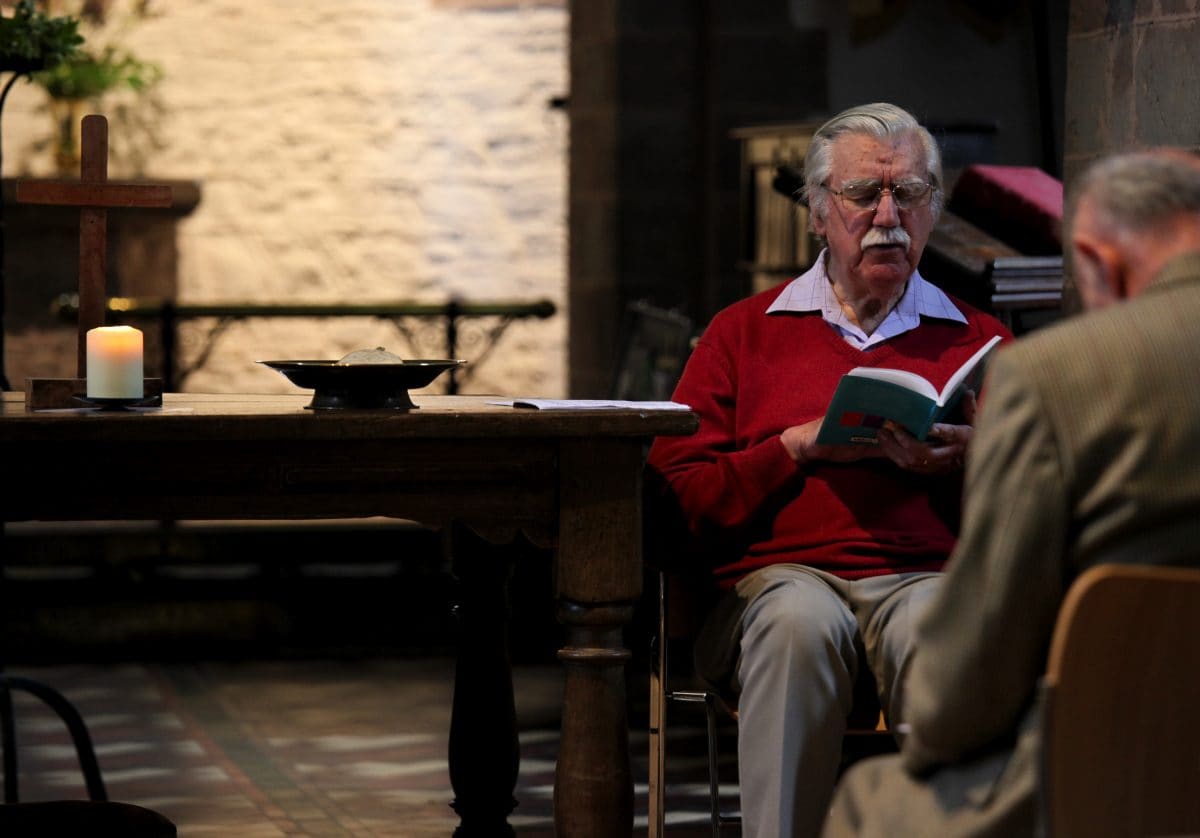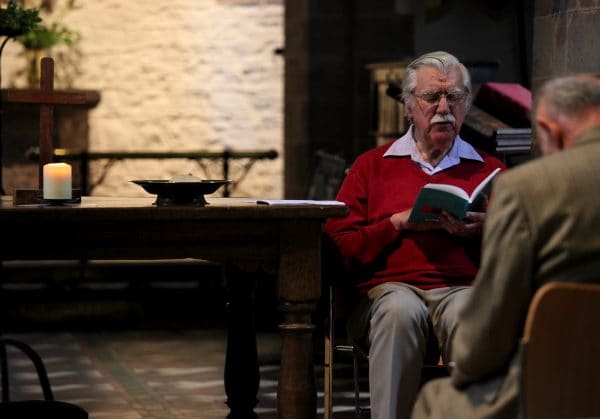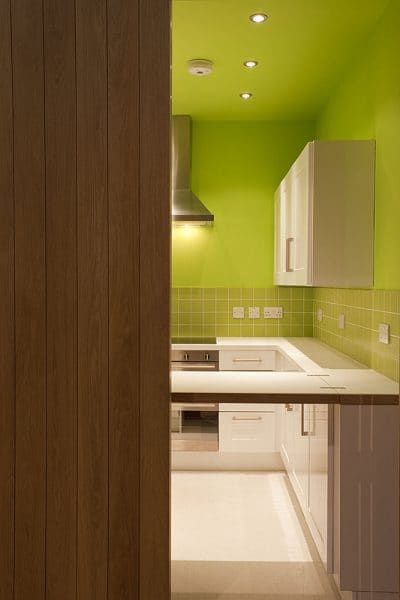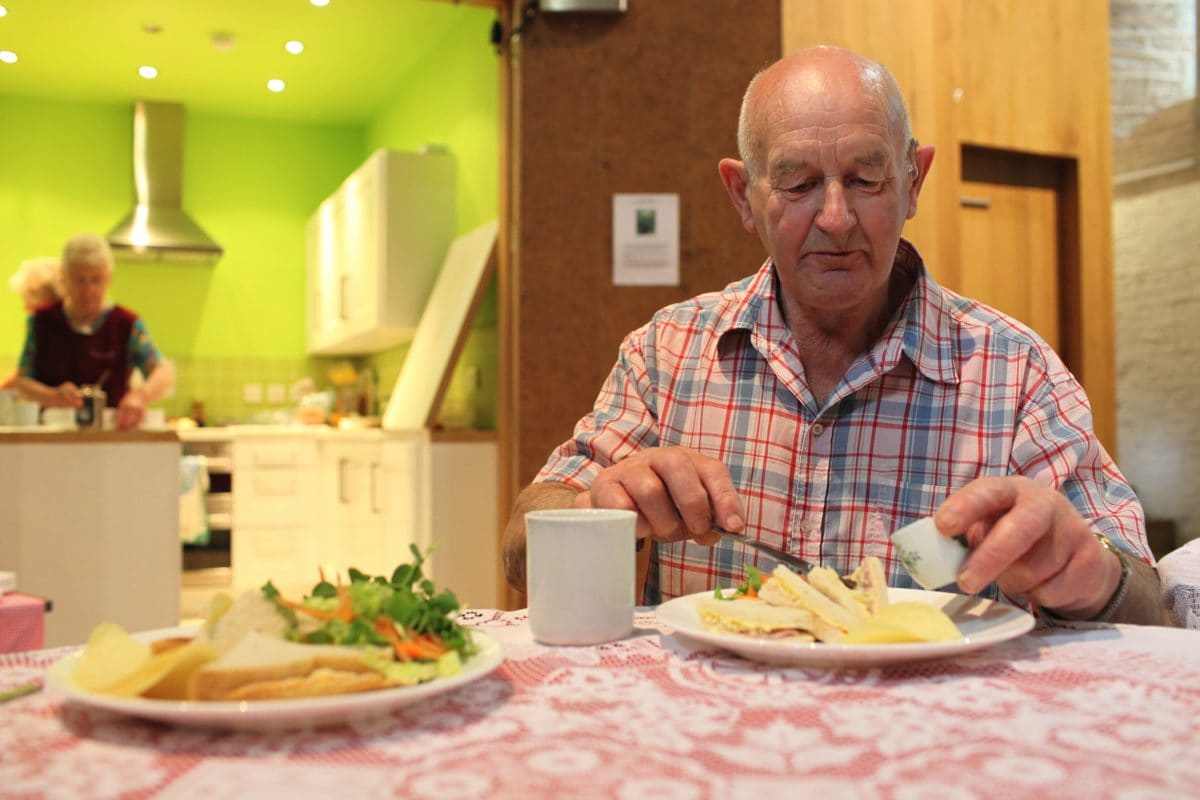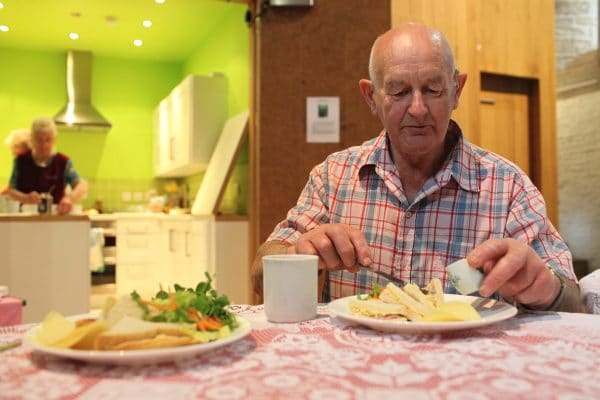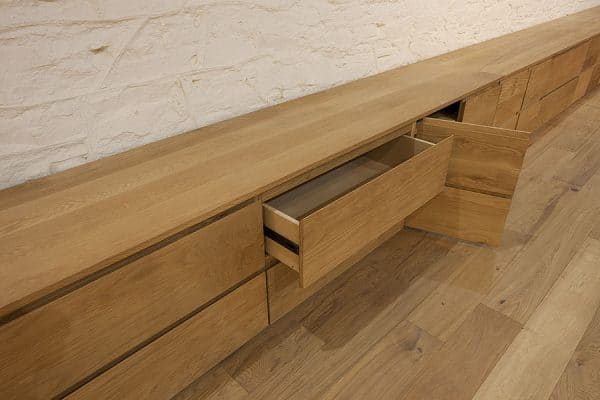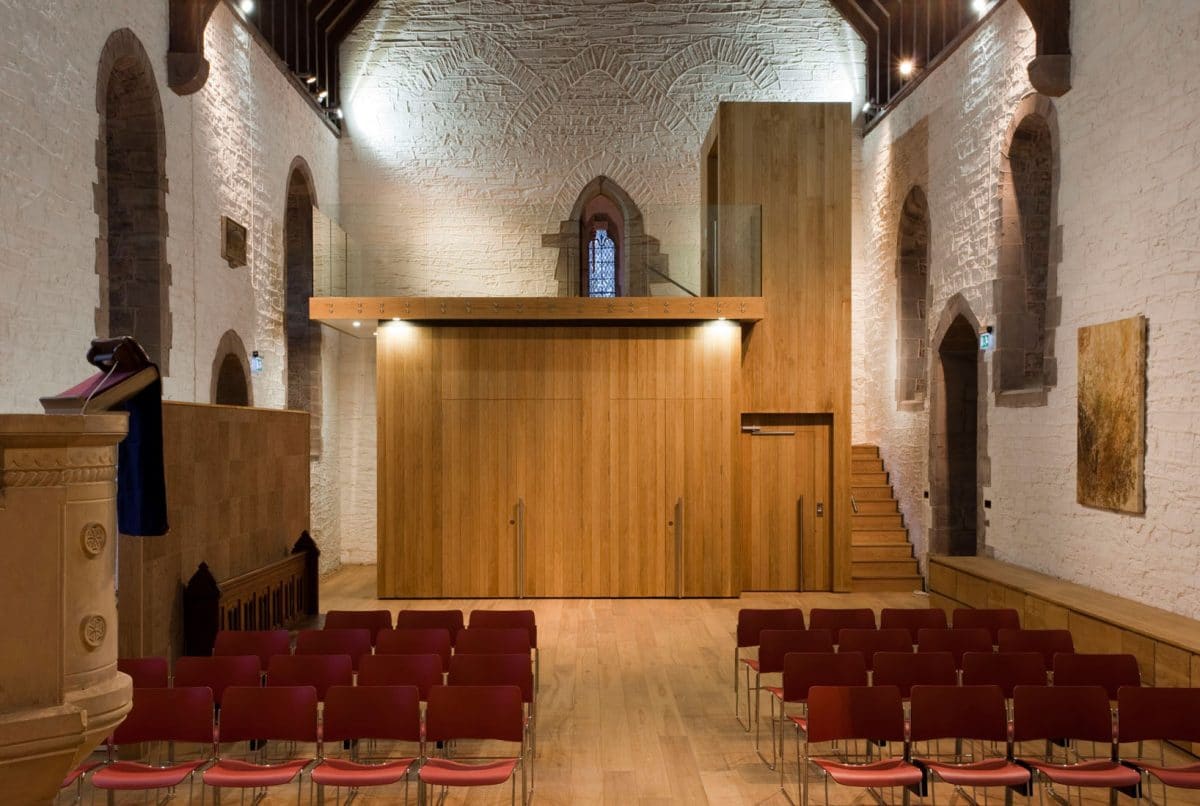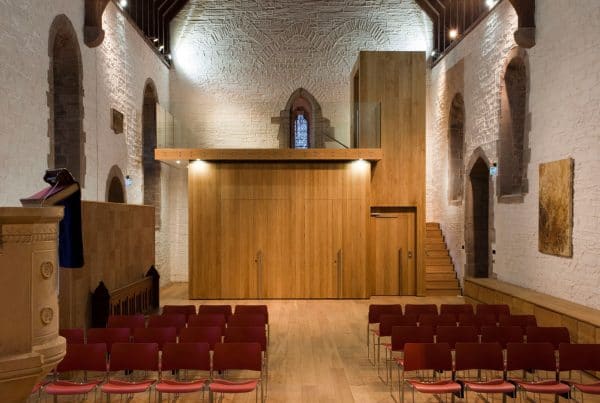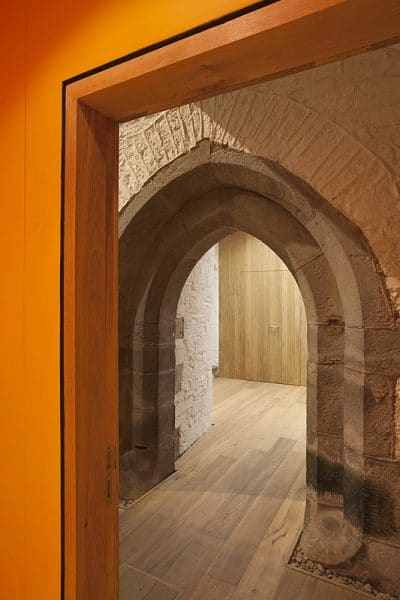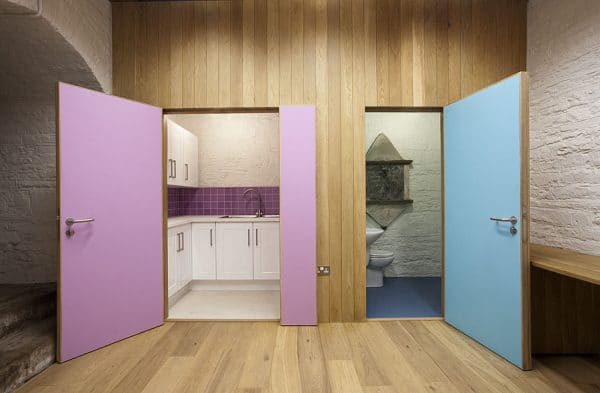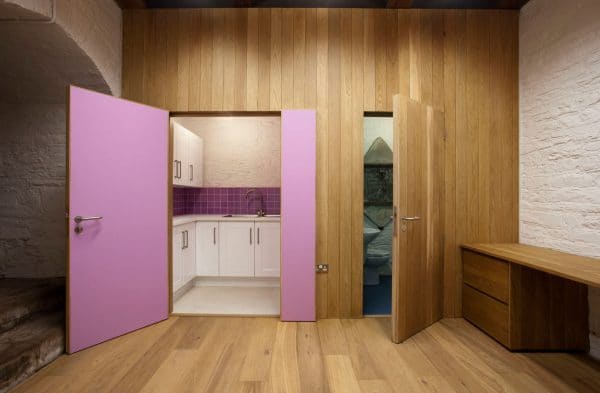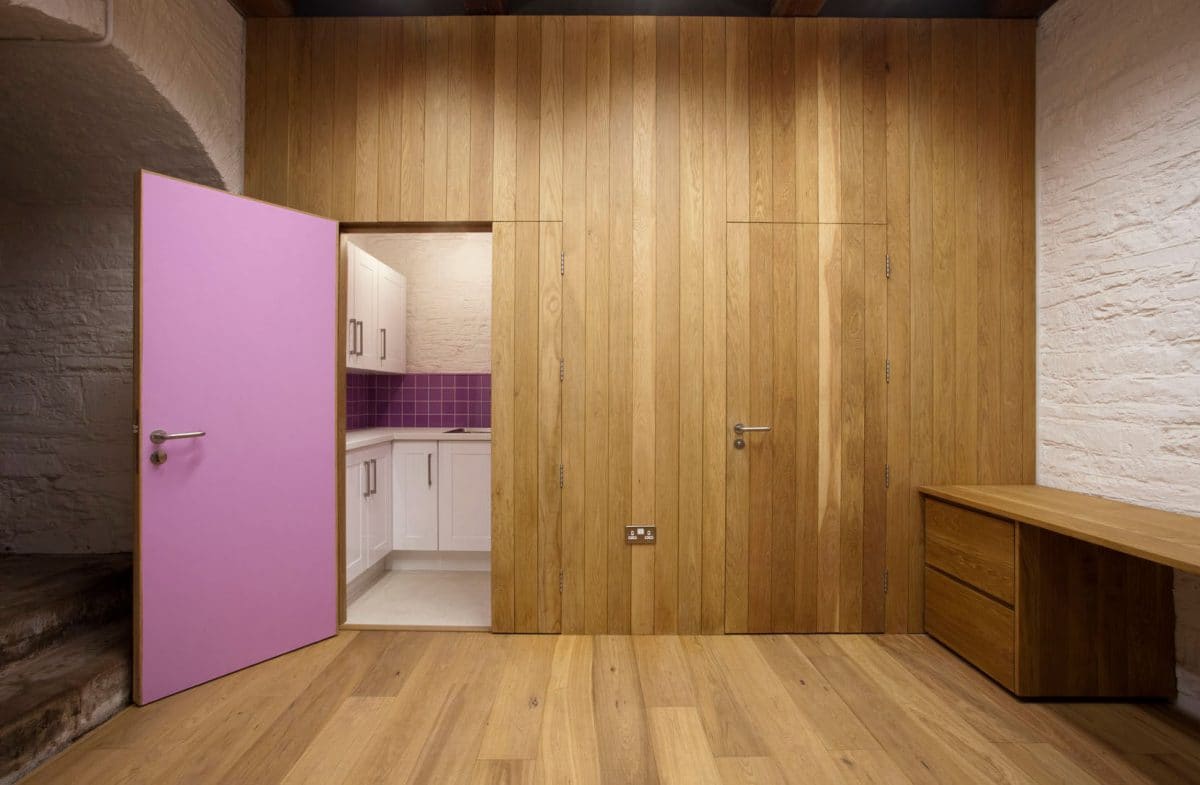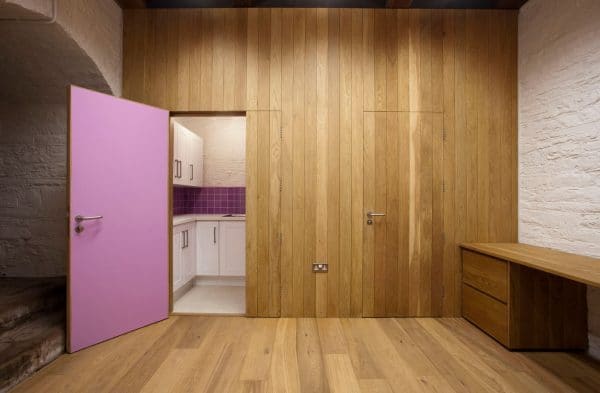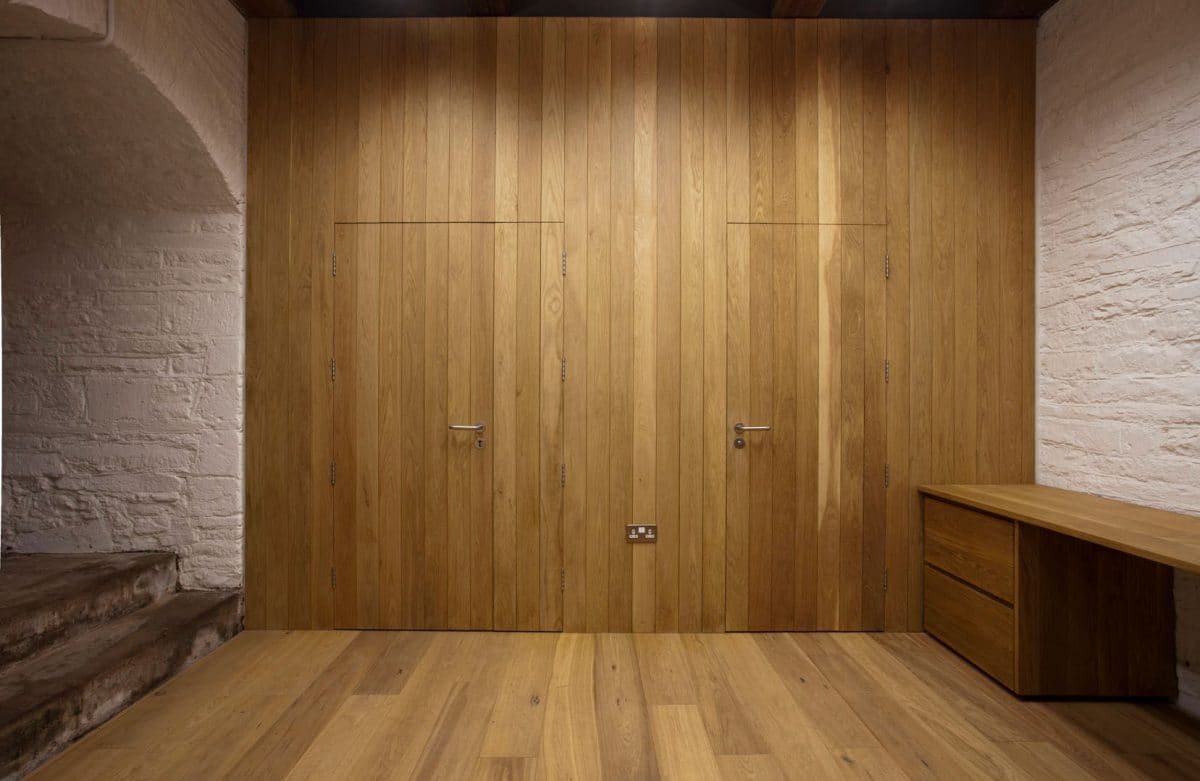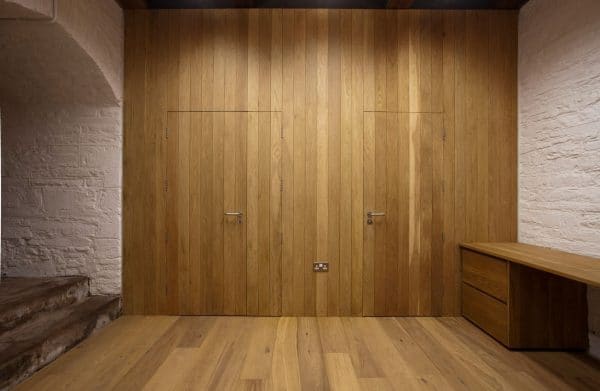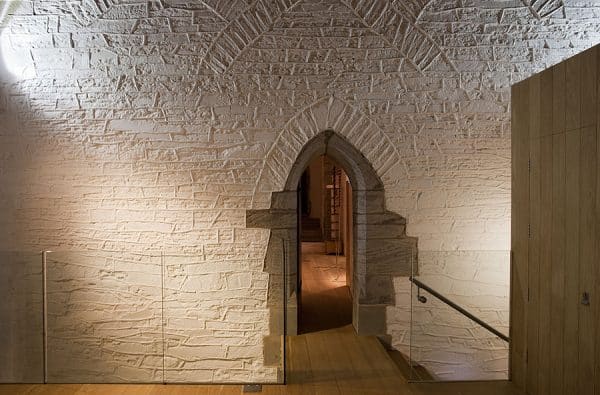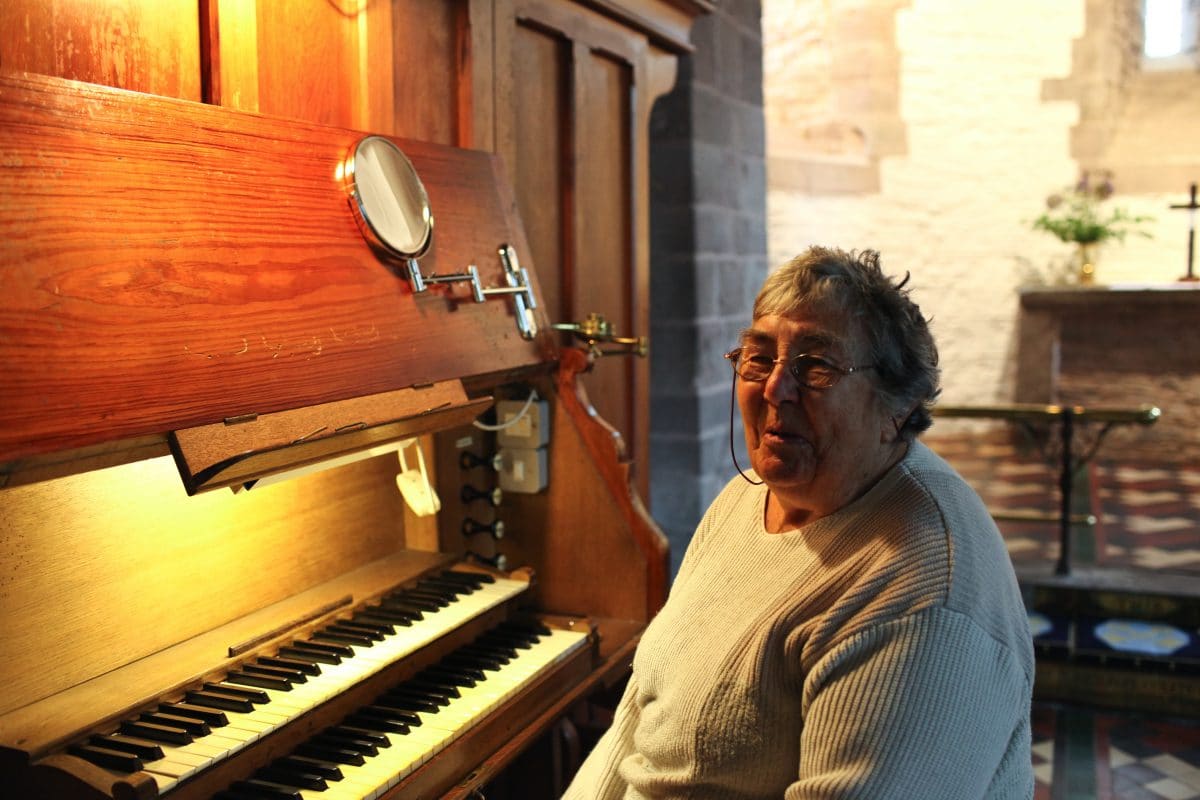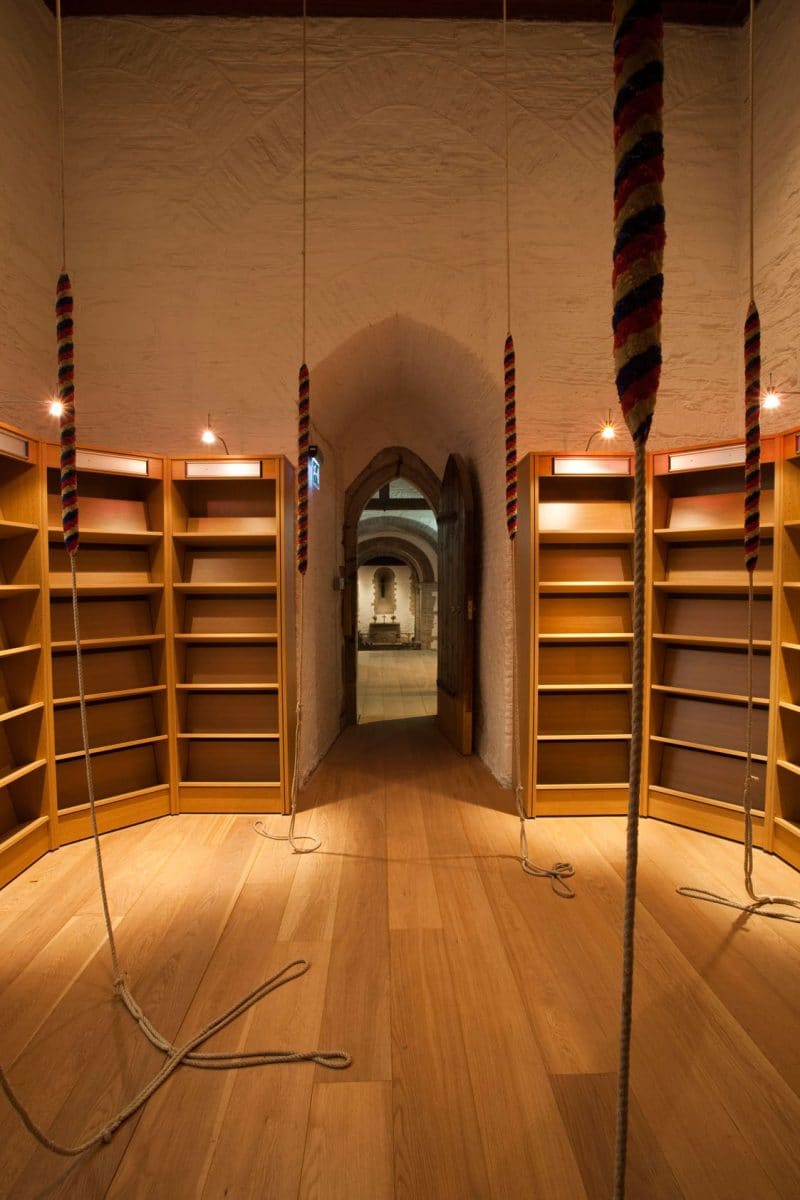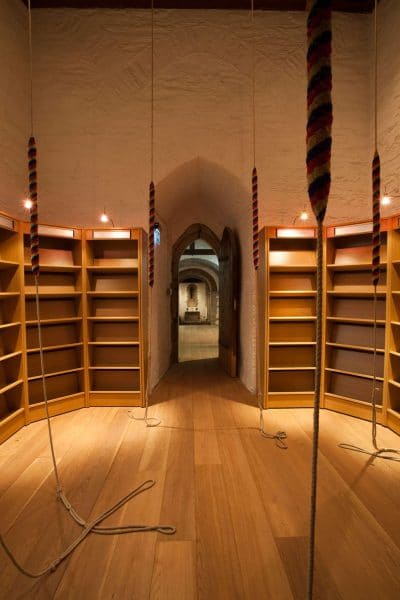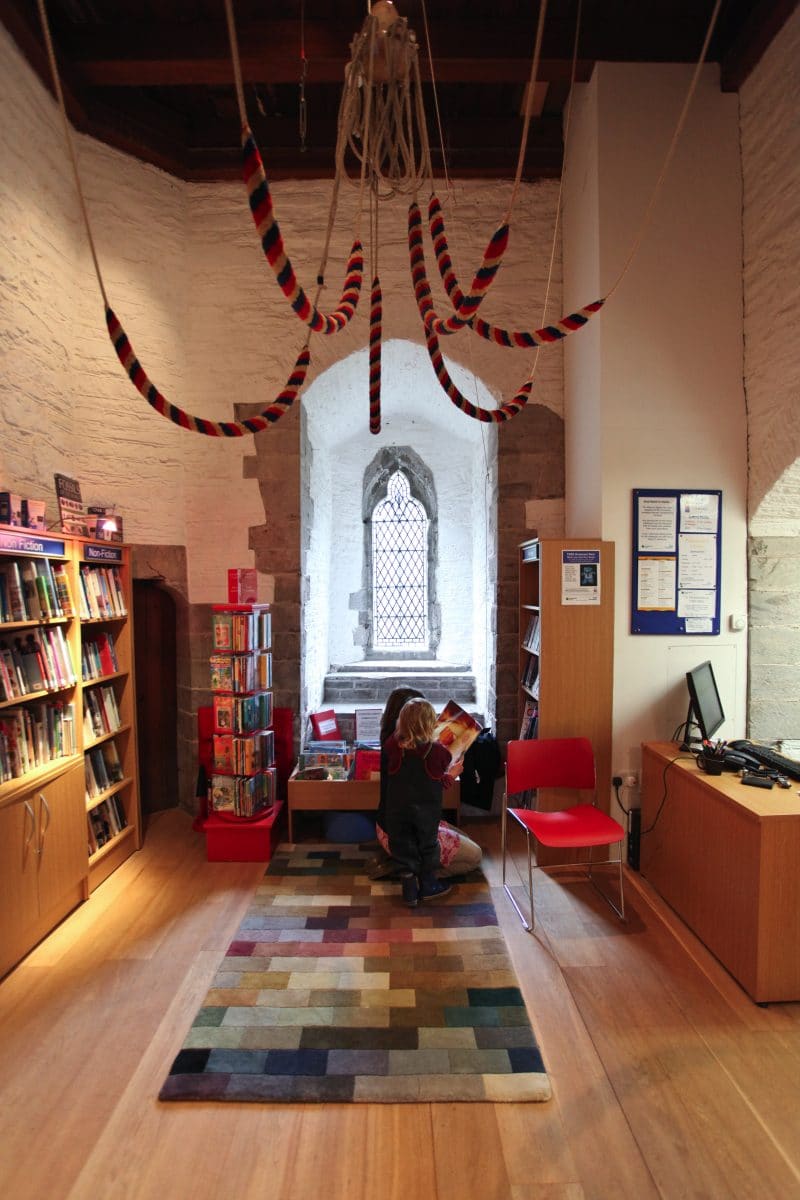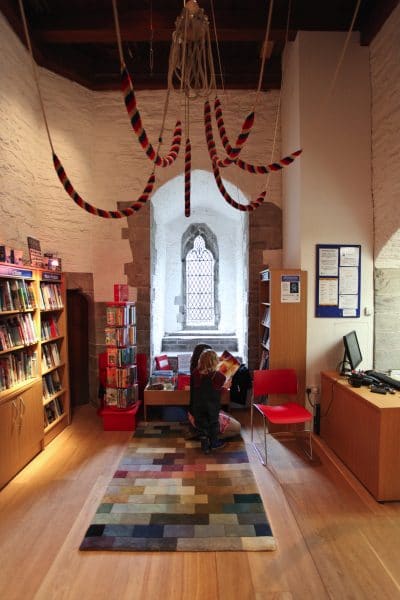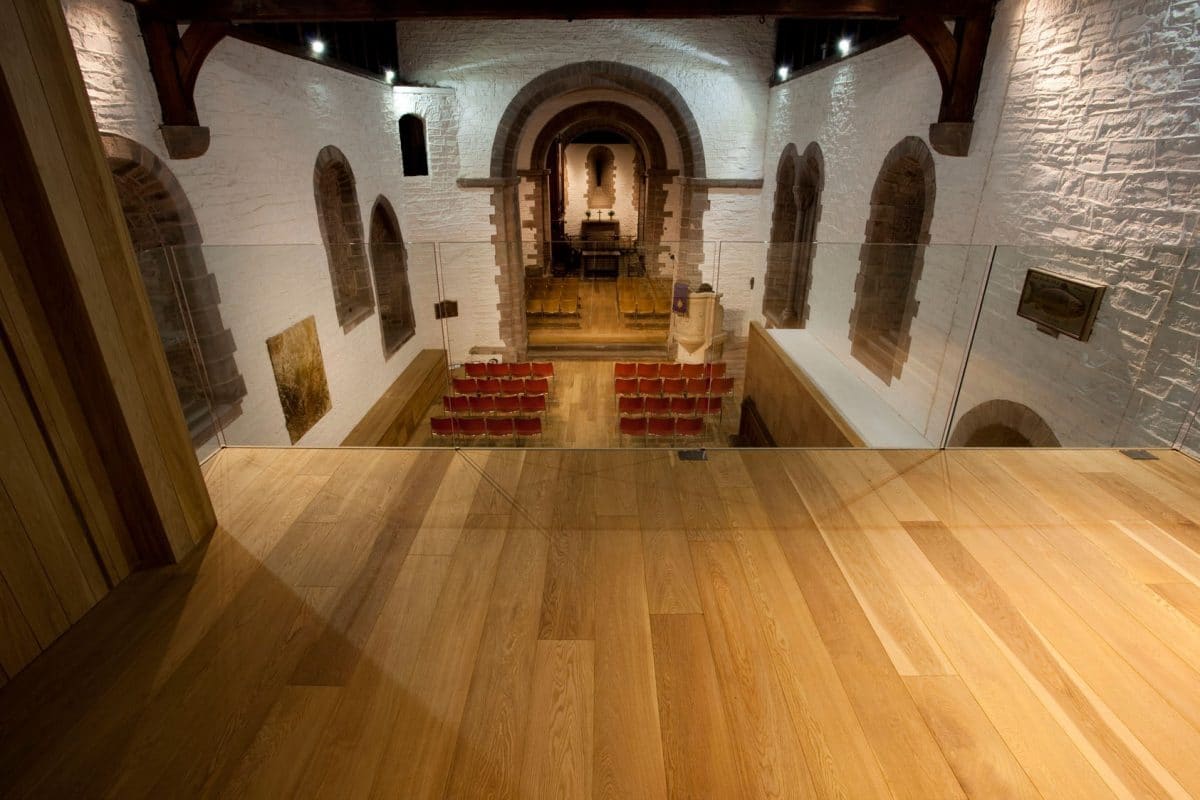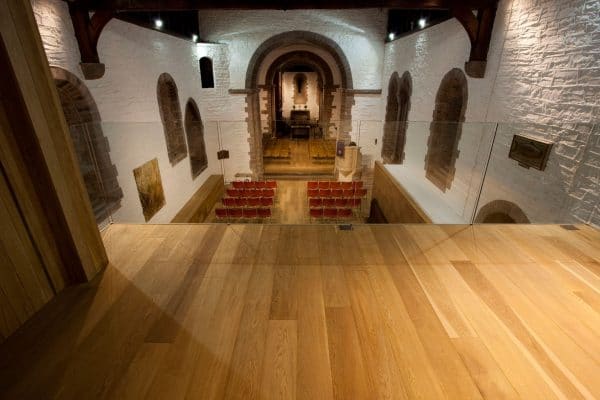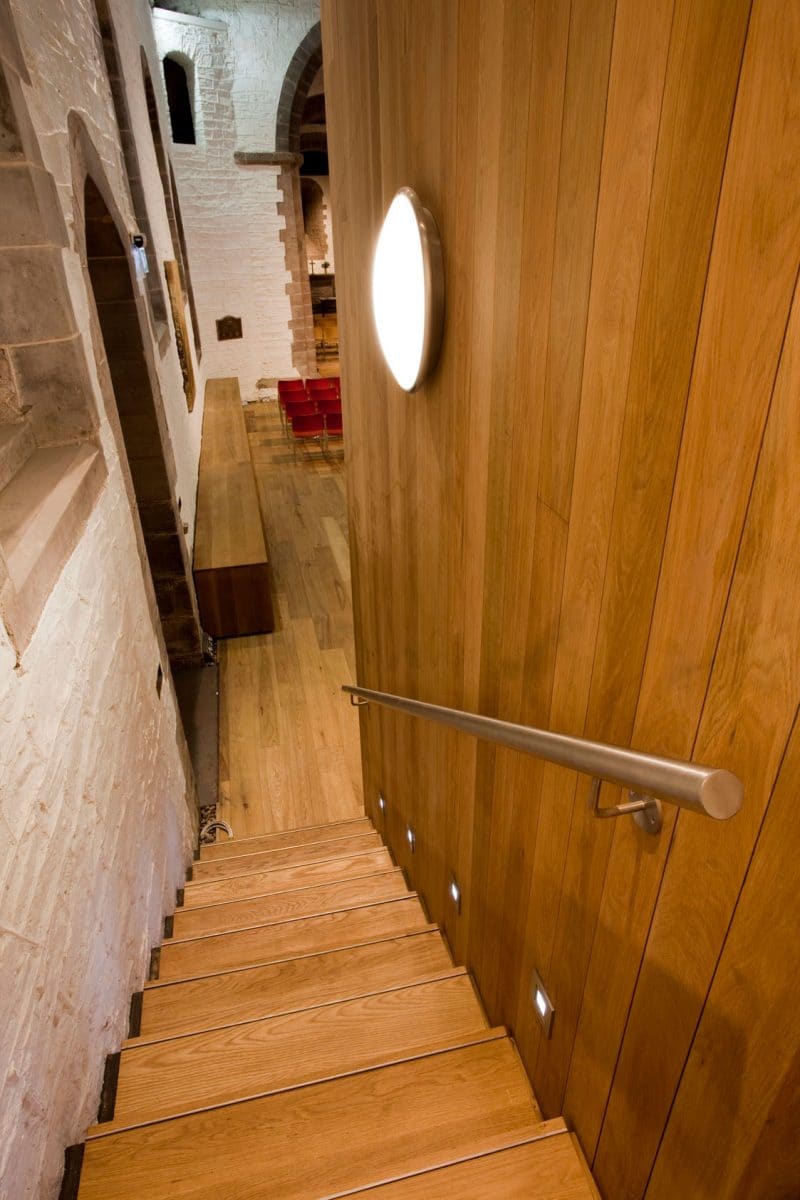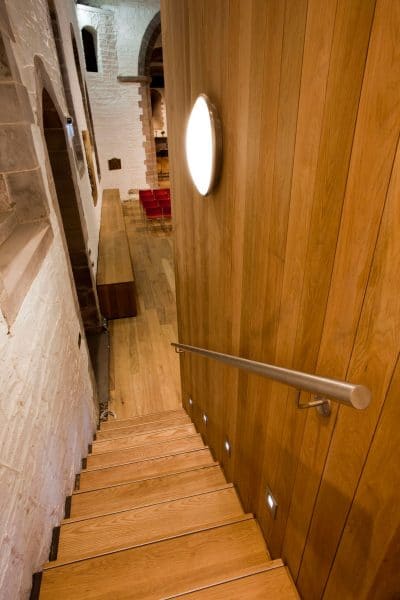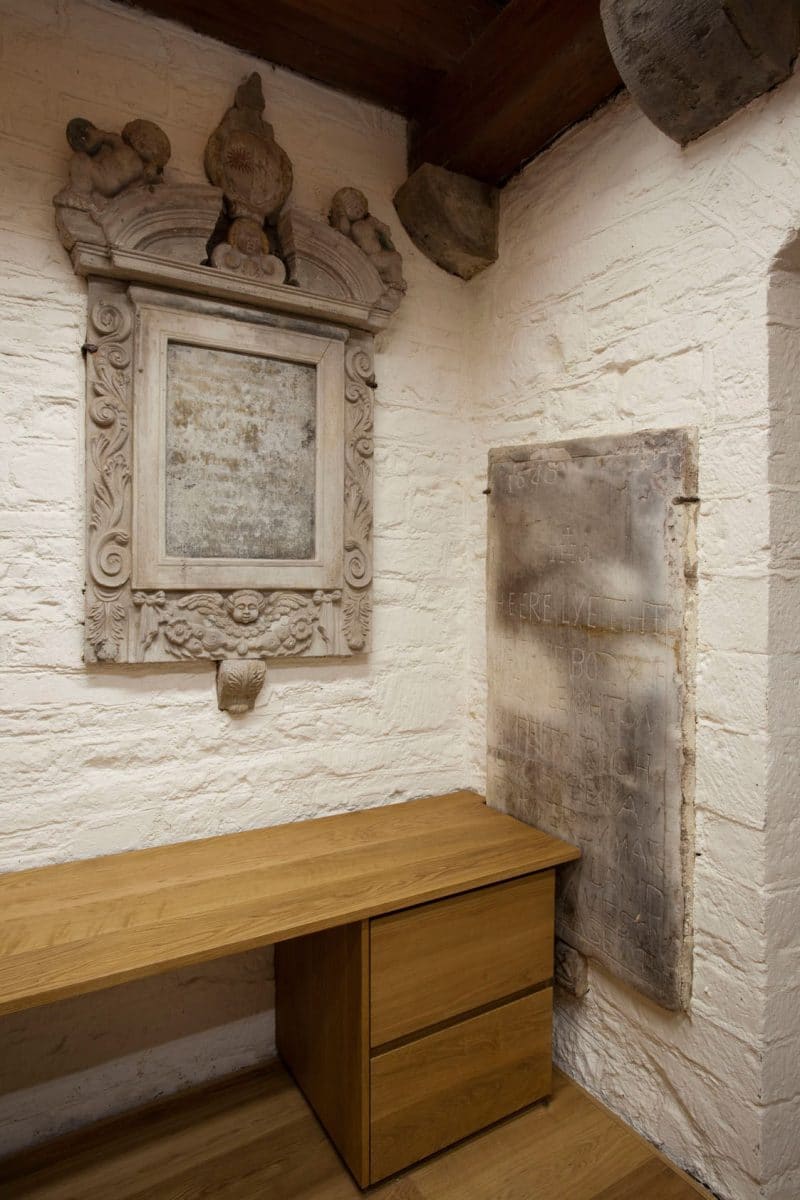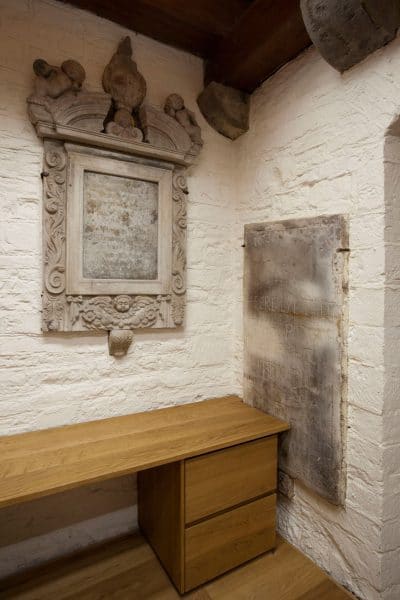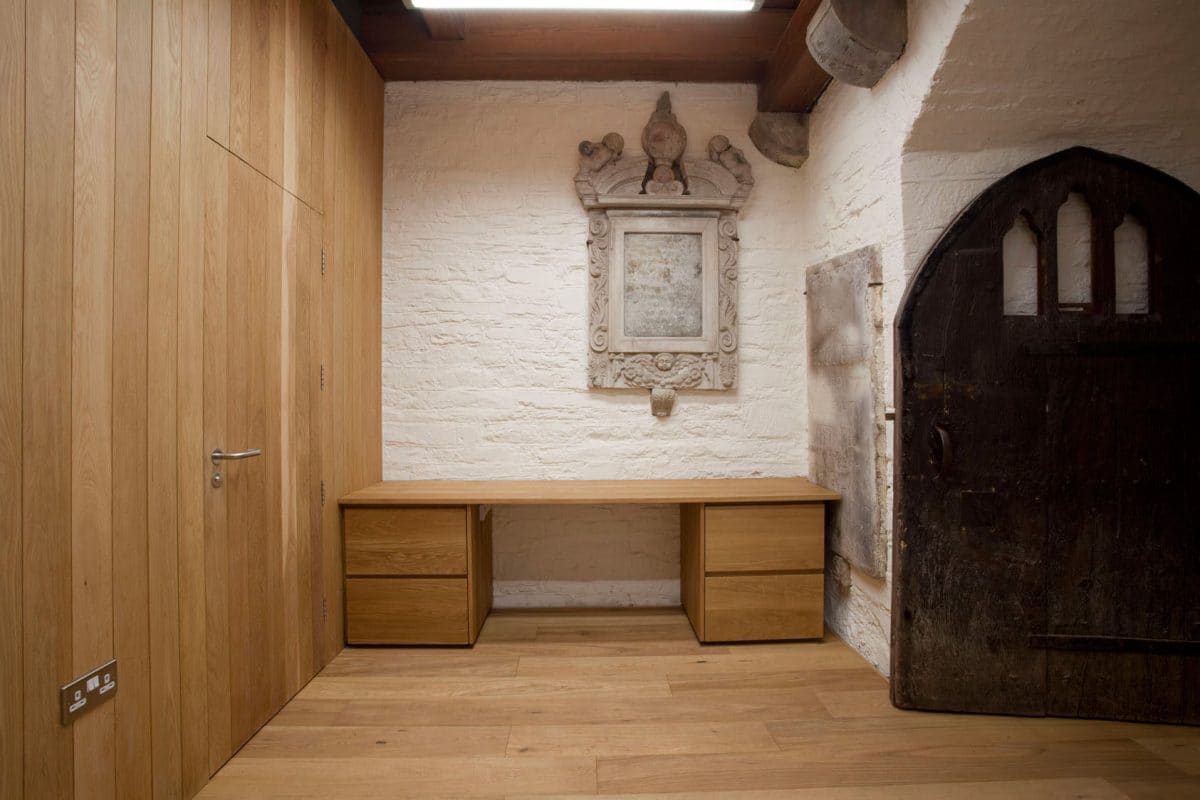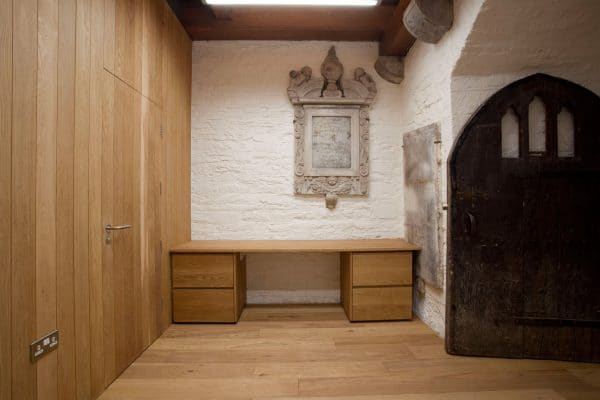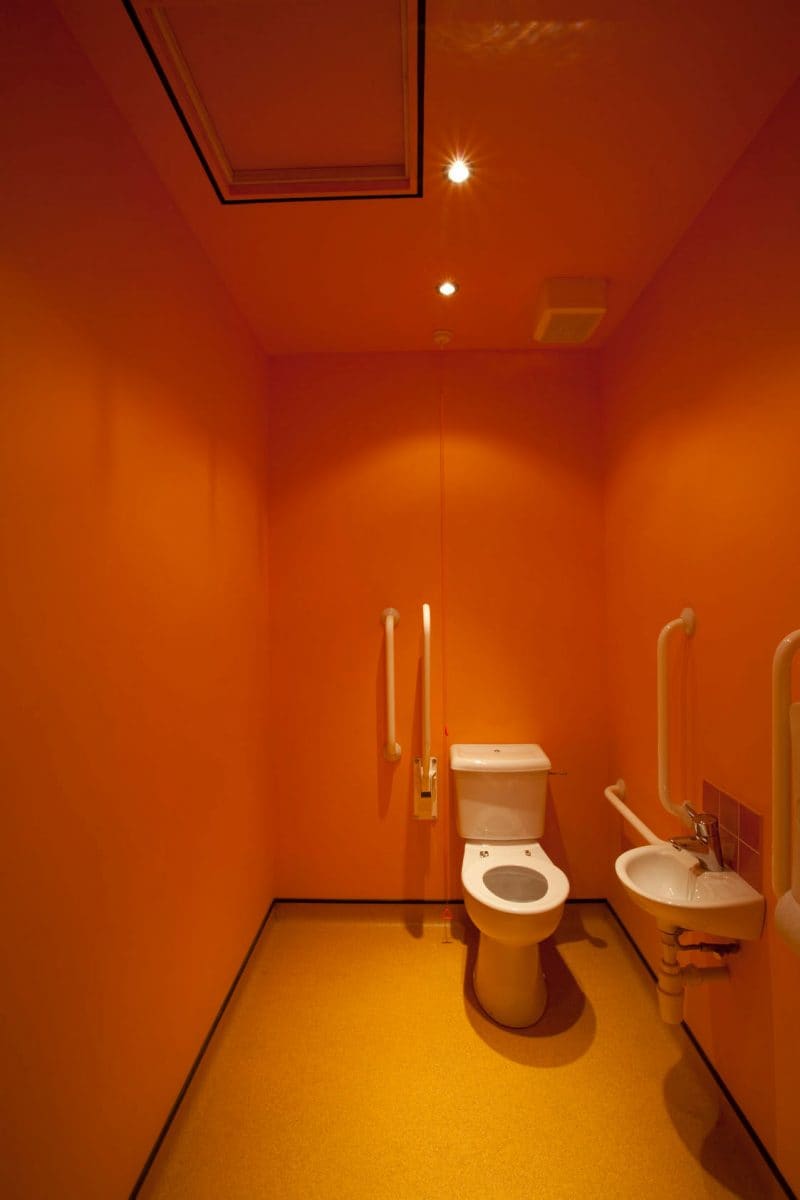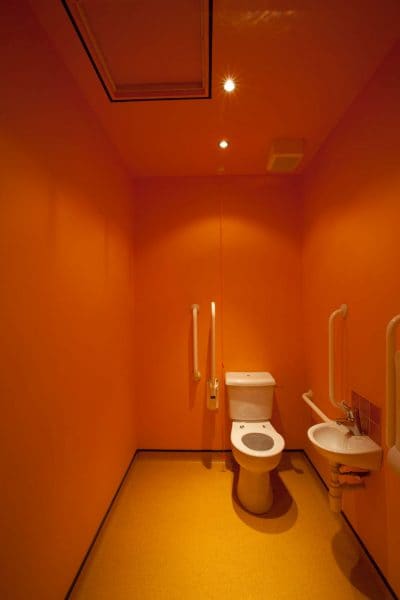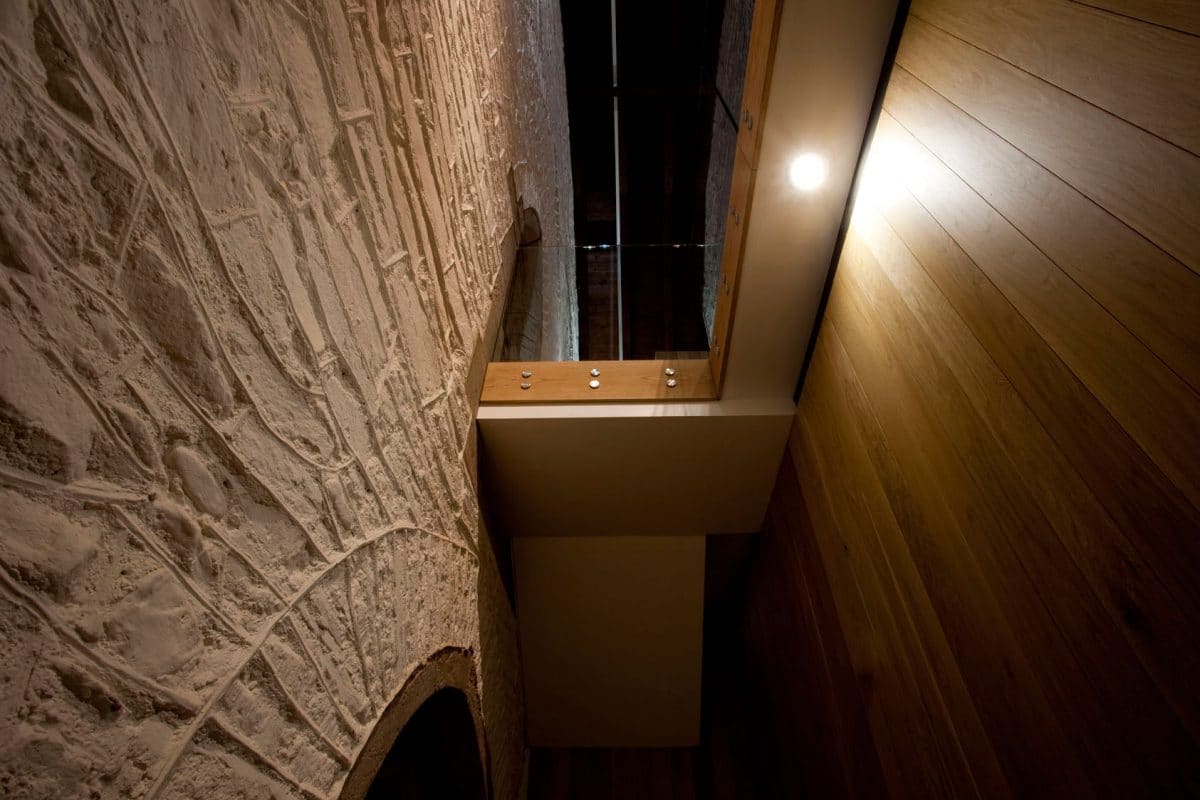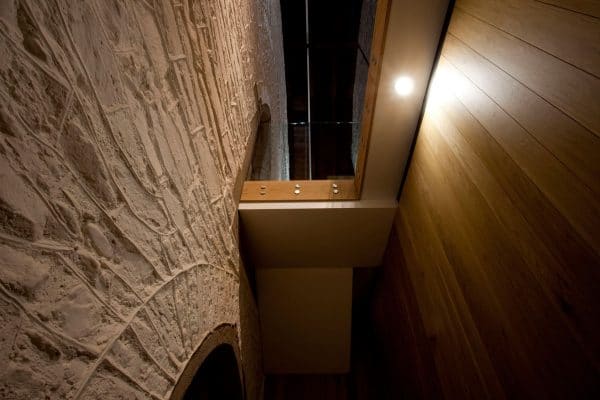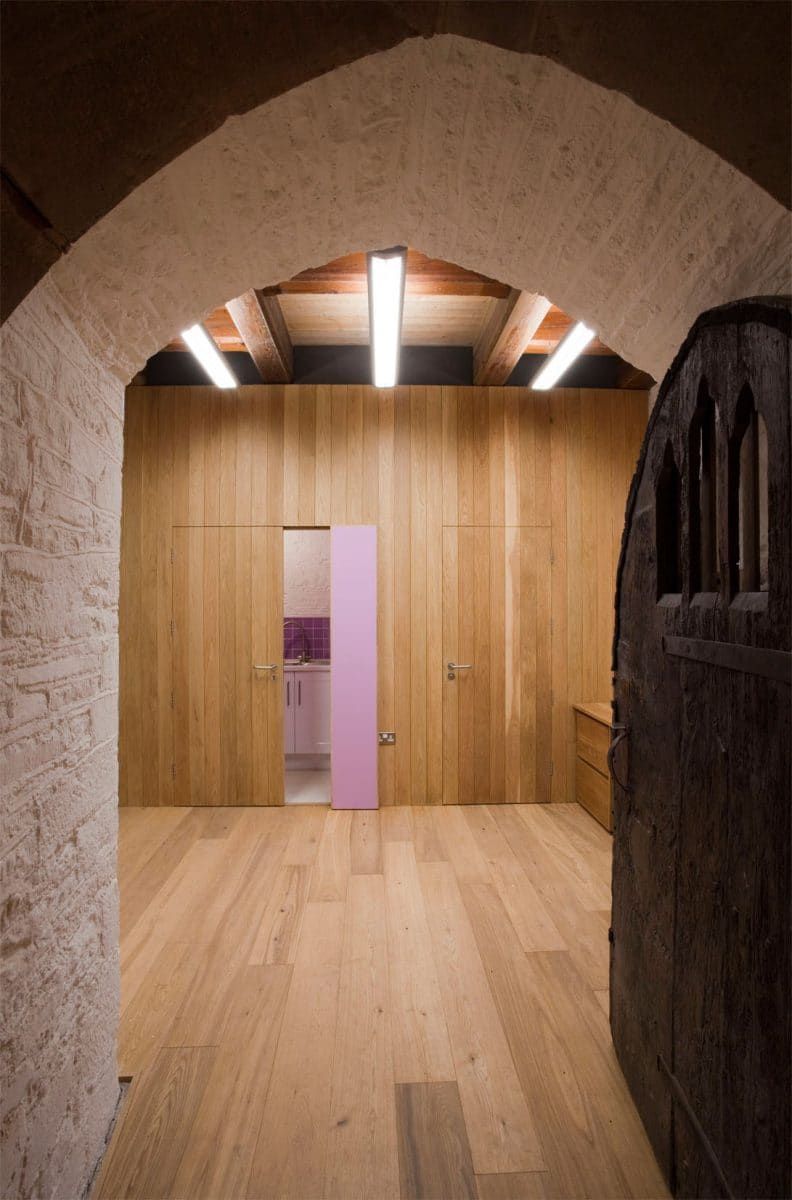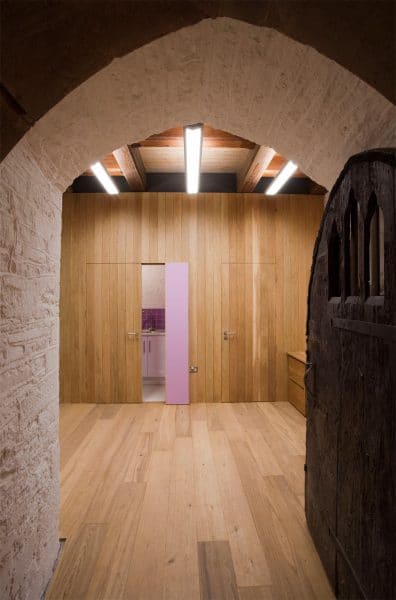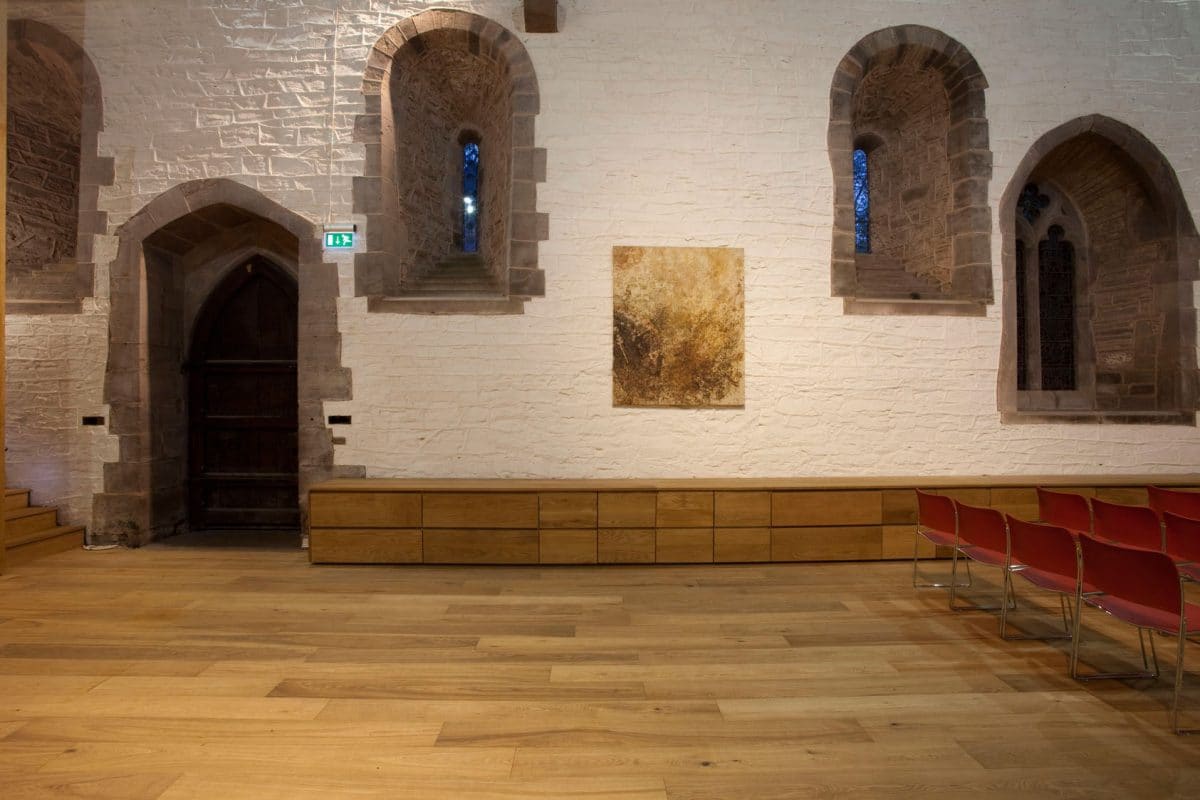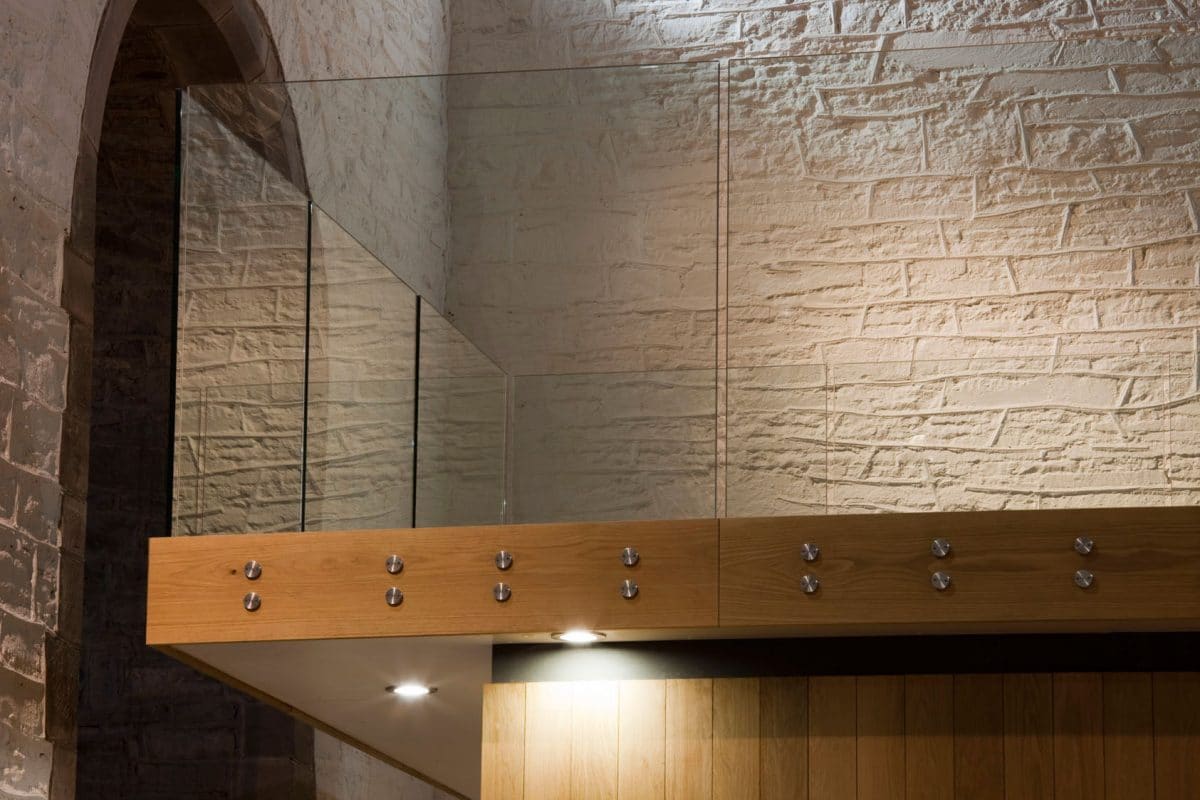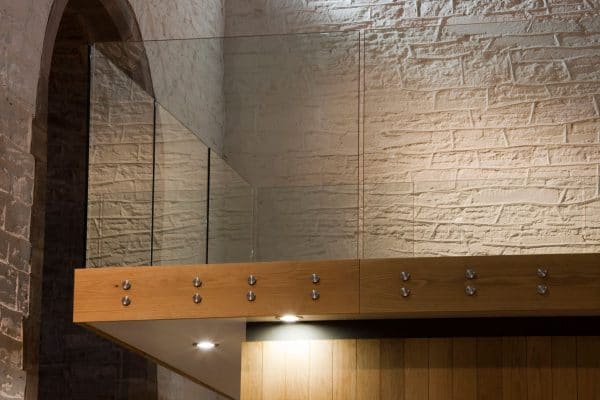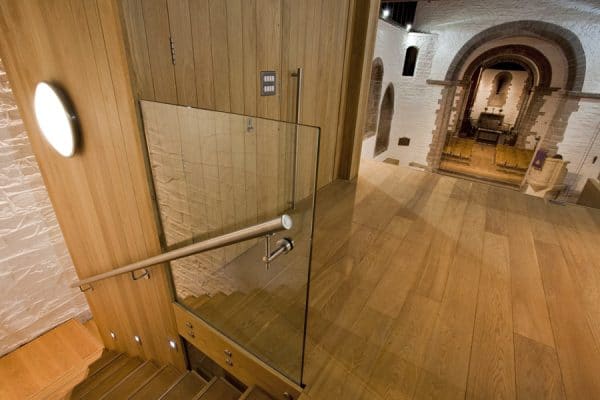
“This project has built deeper relationships amongst and between the church community and the wider community and both are flourishing as a result.”
Revd Simon Lockett, Vicar of St Peter’s, Peterchurch
The Building
St Peter’s Church is situated at the centre of Peterchurch, a rural community in the heart of the Golden Valley in Herefordshire with a population of approximately 800 people. The existing church dates from the 12th century, but during the works foundations were found for what was thought to be an earlier Saxon building located nearer the River Dore.
The church building is an unaisled, four cell church. Separating these spaces are magnificent arches, one of which is highly decorated with carving from the renowned Herefordshire School.
During the Victorian period the church was heavily restored, which stripped the interior walls of their lime plaster work, installed a new tiled floor finish to all areas, added a heating system and organised seating arrangements with imposition of pews both in the nave and the first chancel (crossing).
Although structurally the majority of the building was in a reasonable state of repair, the internal arrangements meant the building had limited use due to the lack of usable space, lighting and power installations and basic facilities such as WCs or a kitchen.
The Brief
The PCC of St Peter’s Church was approached by the local authority with the idea of re-ordering the church and using the nave as a community centre, primarily to work with young parents and children under the Sure Start programme. After much negotiation and community consultation the PCC agreed that St Peter’s Church should be re-ordered to create a sustainable, multi-use community building, designed to function as:
- a service delivery centre for children’s services (Sure Start programme)
- a public lending library
- a worship space for Anglican services
- a community event space.
The Solution
Due to the sensitive nature of the site in heritage and religious terms, Communion endeavoured to change as little as possible about the existing building, and sought to reduce to an absolute minimum the facilities required to deliver the brief. These facilities were prioritised as follows:
- a wood pellet boiler
- a kitchen
- an accessible WC
- a WC
- a cleaners’ area
- stair and lift access to first floor balcony.
To minimise impact, all facilities are designed to be contained within freestanding timber boxes. When use dictates, the boxes are opened allowing the existing spaces to be transformed from 12th century patterns of worship, to more contemporary uses almost instantly. Once the activity is complete, the boxes are closed and the space returns to sacred silence.
The timber boxes are designed as lightweight, freestanding and reversible insertions within the existing space. The outer cladding of the boxes is specific to each. The largest and most complex box is located at the west end of the chancel. This box houses the kitchen, an accessible WC, a platform lift and a plant room. This gives support to the oak staircase and first floor balcony with a bridge to the new library. The cladding is formed from 20mm thick, 100mm wide American-grown oak boards. Great care was required in its construction, as an elevation of uninterrupted oak boards needed to be achieved. The setting out of the internal spaces and the placement of the opening apertures was subject to the matrix of the oak board cladding. This was particularly taxing for the integration of the platform lift door.
The floors are finished with 15mm or 22mm thick, 180mm wide engineered boards, which work well with the underfloor heating loops that were installed.
A 75kw KWB low carbon wood pellet boiler is housed in a cedar-clad energy cabin located on the edge of the churchyard.
Bespoke storage furniture was designed by Communion and constructed in oak or clad in Portuguese cork, which allows for display of the children’s works within the nave of the church.
Our design and delivery of the project included:
- conducting a feasibility study to ascertain the likely constraints involved in transforming a 12th century building into a state of the art, multiuse, community venue.
- submitting a scheme to the Diocesan Advisory Committee and successfully negotiating with key external consultees including English Heritage, Society for Protection of Ancient Buildings, Cathedral and Church Buildings Division to deliver a faculty permission for the project.
- submitting a Planning and Listed Building Application to the Local Authority in order to gain consent to site the cedar-clad energy cabin on the edge of the graveyard.
- working closely with the project fundraiser to supply documentation to support the fundraising effort in order to raise £500,000 to deliver the project.
- producing full design information to allow the project to be competitively tendered.
- acting as design team leader and contract administrator to deliver the project on behalf of the PCC.
The Outcome
“It’s wonderful.”
“I’m still getting used to having a rural church that’s really buzzing. It’s wonderful.”
Revd Simon Lockett, Vicar of St Peter’s, Peterchurch
St Peter’s Centre is now an exceptional space, designed by Communion and developed in partnership with St Peter’s Church, Peterchurch PCC and Herefordshire Council.
The project is an overwhelming success. It is operating as a hugely popular lending library. The Sure Start centre is achieving its full service delivery outcomes and more. The church is continuing to be used as a place of worship for midweek and Sunday services. The church is being regularly hired by many community groups from Tai Chi to Voluntary Action Workers, and for conferences.
The project won the 2011 2011 ACE/RIBA Awards and the jury’s citations commented:
“The interventions work with the grain of the building and have a simplicity, austerity and clarity which works extremely well.
The architects and client have created a series of spaces in which a huge variety of activities can take place and this inventive programming will hopefully help encourage the kind of chance encounters which help make up a community.
If this kind of partnership between churches and villages are reproduced throughout the country, both will thrive.”
See Also
St Peter’s Church, Peterchurch, has attracted a great deal of national attention since its re-ordering. Here are some blog posts to give you a flavour:




